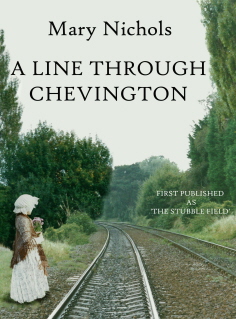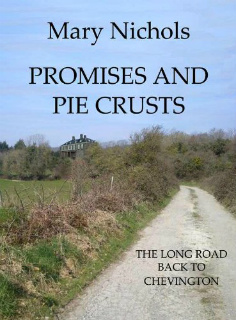- Farewell
- Introduction
- All Mary's Books
- Coming Soon
- More about Mary Nichols
- Links
- Search
- Contact Me
- Acknowledgments
- Blogs
- Most recent blogs
- Archive
- 2014
- 2013
- Building family anecdotes into a novel
- Collective Noun for a group of Romantic Novelists
- Village Brickmaking
- Writing Historical Novels for Mills & Boon
- Plot and Character in Historical novels
- Norfolk roots
- Developing that first Idea
- A Weekend to Remember
- Writing and Selling historical novels
- Using the Second World War as a setting
- What makes a good novel
- Doing the Research
- Spring in the Garden
- Historical novels: getting the setting right
- Writing Novels set against an historical background
- Mothers' Day
- Romantic Novelists' Association Annual Awards
- Shortlisted
- Do you need to be a historian to write historical novels
- 2012
Writing and selling historical novels
Sun, 21/07/2013 - 11:00 — Mary
 This is the sixth blog I have been writing for the Australian Literary review.
This is the sixth blog I have been writing for the Australian Literary review.
I am often asked where I get the inspiration for my books, but perhaps inspiration is not the most apt word. It is often a process of one thing leading to another. It might begin with something I’ve read, a tale someone has told me, a newspaper article or a TV programme which attracts my attention. I keep thinking about, adding to the original thread in my mind, discarding other threads, working on the plot and characters until it cries out to be written down.
One of the first novels I wrote was inspired by two books I had been reading: The Workhouse by Norman Longmate and The Railway Navvies by Terry Coleman. I didn’t read them specifically to use as a background but because I was interested in the subjects, but having read them I could see their potential.
Everyone dreaded the workhouse; I can remember my grandparents talking about it as something to be avoided at all costs. Life there was harsh, as it was meant to be. Families were separated in these institutions, husbands from wives, parents from children, brothers from sisters. In my book, orphaned brother and sister, Sarah Jane and Billie Winterday are forced to go to the workhouse when their parents die, where they are separated and from then on their lives follow completely different paths, although every now and again they are within a whisker of being reunited. Sarah Jane becomes involved with the navvies but she is ambitious and hers is a rags-to-riches story. Billie is a street urchin whose path is equally rocky, but he too grows in stature and ultimately finds success. I wrote the book through both points of view but I knew it was far, far too long and so I split it into two, dealing with Sarah Jane in the first book and Billie in the second.
The first one was turned down goodness knows how many times, though usually with a note saying where I had gone wrong. It is amazing the number of ways there are to go wrong and I must have used them all! As a result it was rewritten over and over again, but it was eventually published as The Stubble Field in 1993 by Orion (an imprint of Hachette) and did quite well.
Then I had one of those setbacks familiar to every writer. Although, according to my editor, Billie’s story was even better, it was turned down on the grounds that historical novels were out of fashion. No one was buying them. Certainly the publishers weren’t. I was stuck. No publisher would take a sequel to a book published elsewhere. Luckily for me Mills & Boon continued to publish my shorter historical romance novels and I kept going with them.Billie’s story languished in a drawer until I brought it out last year and published it as an ebook with the very able help of my daughter-in-law, entitled Promises and Pie Crusts.
We did the same thing with the Stubble Field and renamed it A Line Through Chevington, so now they can now be bought and read together if you have an e-reading device. We did the same for The Poacher’s Daughter, with a background of the Captain Swing Riots of 1830, which was also originally published by Orion. Some of my early Mills & Boon books are out of print and I regained the rights to these and we converted them into ebooks too.
There is no telling how long or how successful the ebook phenomenon will be. It has its plus and minus side, but at the moment it is giving my out-of-print books a second airing and putting a little money into my pocket at the same time.
***
